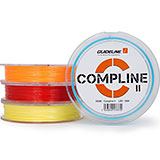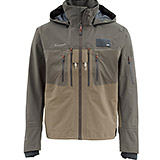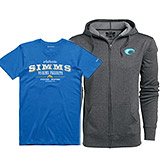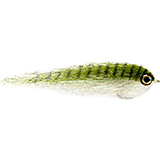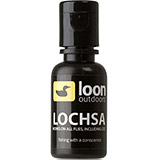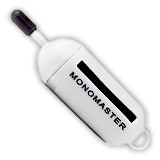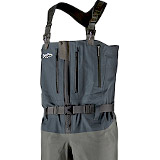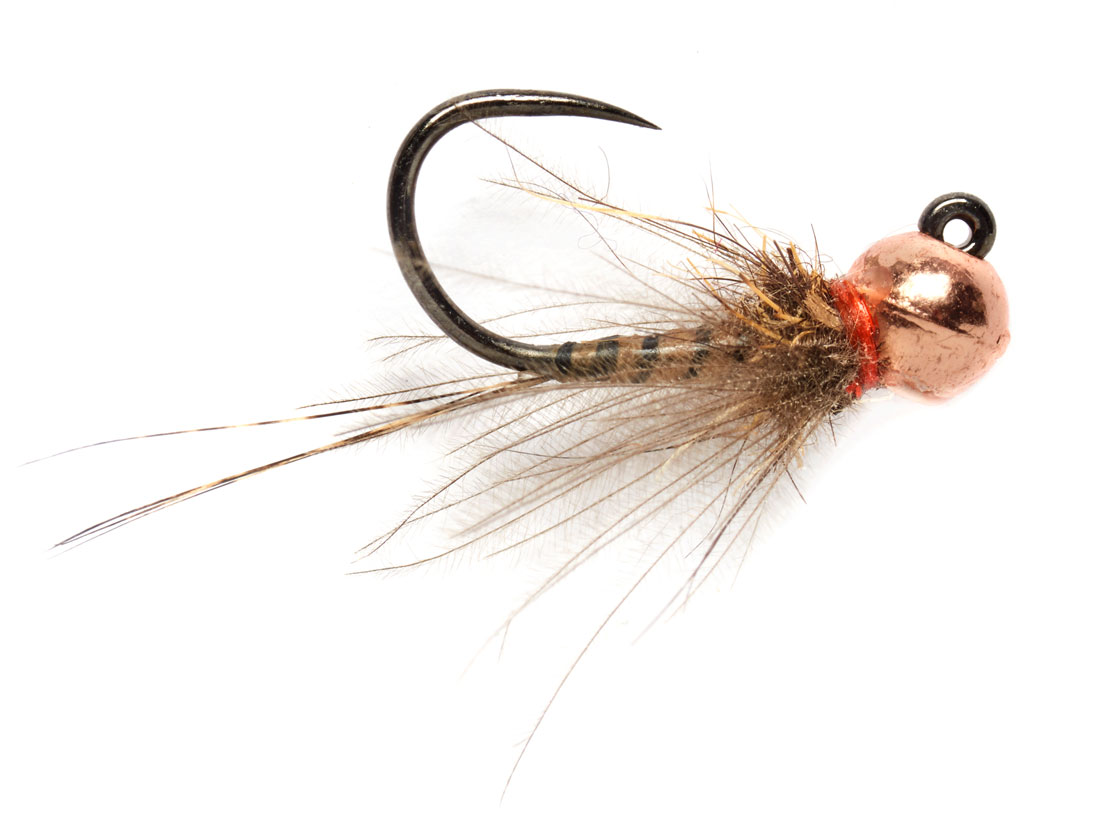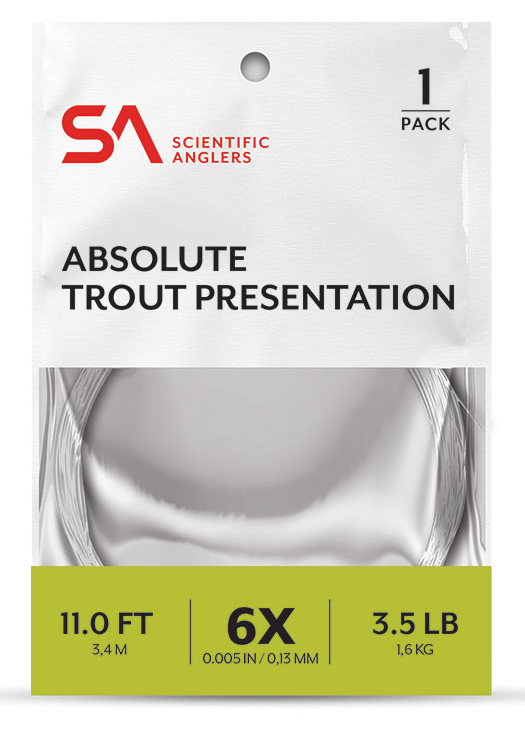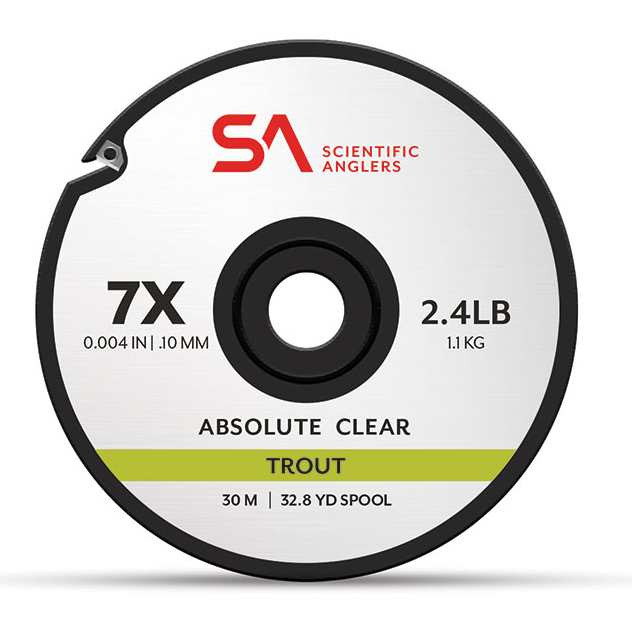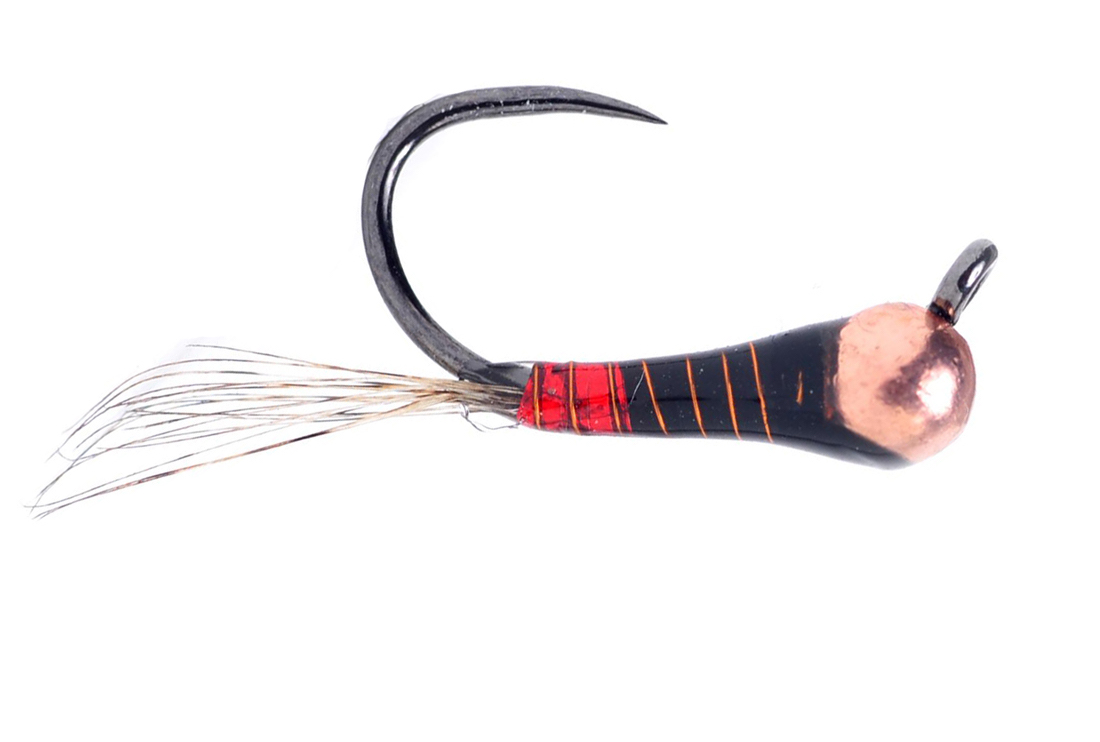Grayling Dreams - 3 Tips for Grayling in Summer and Autumn
Grayling fishing in summer and autumn is challenging - and simply gorgeous! In clear, shallow waters, a discreet presentation of the fly is essential. The 'Lady Of The Stream' is particularly good to catch now with tiny nymphs and delicate dry flies. Patterns with CDC feathers on ultra-fine leader tips are particularly effective and promise successful fishing for this beautiful species. These are our tips!
Sight fishing for Grayling is particularly interesting in the summer and autumn months. If the light conditions are right, you can watch these proud fish in the current with bright polarized glasses and see how they gently move sideways to pick up small insect larvae with their slightly underslung mouths. And if everything fits, you can watch how the graceful member of the salmonid family lets herself be carried to the water surface by the large dorsal fin and draws delicate rings on the surface.
To be successful in these situations, discretion is the order of the day! In contrast to dusty water, higher water levels and active search fishing with the nymph or dry fly, it is now important to study the behaviour of the Grayling carefully before presenting the fly. It is not uncommon to have only a few chances with sight fishing until the 'Lady Of The Stream' retreats suspiciously to the river bottom and stops feeding.
These are our three most important tips for successful Grayling fishing at sight in summer and autumn:
1. Patience, Caution and Discretion. Grayling are typical schooling fish and not infrequently congregate in small groups even in summer and autumn. Unlike Brown Trout, Grayling have a less pronounced flight instinct. Nevertheless, they are easily spooked by careless behaviour on the part of the angler - for example, wading too fast, casting shadows on the water or frantic movements in their large field of vision. So before we present our fly, it's important to stalk carefully and get into position with caution. It depends on whether we are fishing with a dry fly or a nymph.

The 'Lady Of The Stream'
When dry fly fishing, a downstream presentation is particularly suitable. Because this way our pattern reaches the fish's feeding zone before our leader tip, leader and fly line can cause possible scepticism. A Reach Cast, a stopped overhead cast, is an appropriate cast in these situations to gently place our dry fly on the water and drift into the Grayling's field of vision in Dead Drift. When nymph fishing with a bite indicator, we can take a similar approach. Or opt for an upstream presentation. In this case, discreet presentation techniques such as filigree 'Euro Nymphing' are particularly promising because with this method the water surface is hardly disturbed and the nymph can be offered repeatedly until the drift comes optimally.
2. Fine fishing - Fine tackle. Especially when sight fishing for Grayling in clear water, it is important that we perfectly match rod, reel, line and leader. Because accurate, precise and clean presentation is what makes a key difference between success and failure in these challenging conditions.
We therefore use fly rods in line classes #2 and #3, which are particularly sensitive and allow fishing with thin leader tips. In addition, these sensitive rods are much better suited to precisely serving smaller dry flies (#14 to #20) and lighter nymphs. With the large selection of modern nymph rods on the market, we therefore specifically go for the lightest representatives of these longer rod models (10 ft. to 11 ft.)
Just as important as a sensitive rod is a reel that has a smoothly starting brake. A finely adjustable brake that starts with minimal resistance in the fight supports the use of thin leaders - and these are of the utmost importance. Models that have a closed cage (closed frame design) are also advantageous. This prevents our filigree long leader from getting caught between the spool and the housing and being damaged.

Fine tackle for fine Grayling fishing
It is not uncommon for us to use tippets with a tip diameter of only .10 mm or .12 mm when fishing for Grayling in summer and autumn. The combination of a sensitive rod tip, a gentle brake and a careful setting of the hook reduces the risk of a leader breaking to a minimum and increases our chances of a bite quite considerably! Besides a thin diameter of the leader tip made of monofilament or fluorocarbon, we also go for slightly longer leaders. This applies to both nymph fishing (e.g. by using typical Euro Nymph leaders) and dry fly fishing. While we like to fish for Trout with classic tapered leaders with a length of 9 ft., longer leaders with 11 ft. to 15. ft. are used for Grayling fishing. They reduce the scaring effect and allow for a very discreet presentation and an extremely smooth pattern touchdown on the water surface.

Special Nymph Leaders for gentle presentation
The choice of the right flying line should not be forgotten either! A traditional DT line (Double Taper) is just as suitable for this form of fishing as a WF line (Weight Forward) with a gentle, longer front taper and an overall less aggressive head. Lines with a belly of 11 m or more are therefore absolutely recommended and round off our setup.
3. Handle with Care! Grayling with their spinder-shaped body are not only very graceful, but also more sensitive than Barbel, Chub or Trout, some of which we find in the same habitats. Apart from the sensitive large dorsal fin and the fine scales, it is above all the Grayling's delicate mouth that we treat with the greatest care. For us, flies with pushed down barbs or special barbless models are therefore an absolute must! Small barbless flies with a thin, long and sharp tip are noticeably easier to remove after landing than hooks with a thicker wire.

Wet hands and a rubber net protect the sensitive skin of the Grayling
Another tip for gentle handling of the 'Lady Of The Stream' is to use a rubberised net. Many modern landing nets have a net made of robust rubber, which is particularly gentle on the sensitive skin of the fish and enables a quick release. This is the basis for being able to enjoy challenging grayling fishing in the future.
A selection of our favourite dry flies and nymphs and tackle recommendations for summer and autumn fishing can be found below. You can also find many more tips on adh-world, for example about ultra light nymph fishing for Grayling and Trout. We wish you tight lines and lots of fun fishing for Grayling!
Related products
P-16212
P-10771















